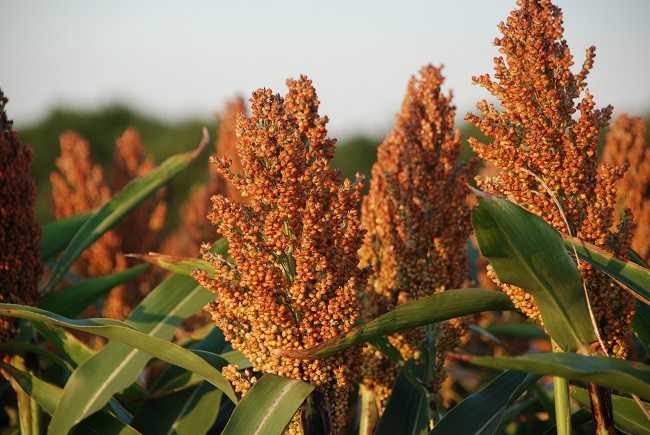China’s hunt for sorghum boosts Nigeria prospects
China is shifting away from the United States’ sorghum, opening a multi-billion-dollar opportunity for other producers, including Nigeria.
The trade war between the US and China has forced Beijing to pivot to other markets in search of agro commodities.
Over the weekend, President Donald Trump escalated the trade tensions, threatening to impose a 100 percent tariff on Chinese goods, on top of the 30 percent levy already in effect.
Beijing, in response, vowed countermeasures against Washington if the US president makes good on his threat.
China had foreseen the rising tensions before now, shifting away from the US sorghum, where it imported nearly 50 percent of sorghum in 2023.
Read also: NB tapping locally-sourced sorghum to limit exposure to FX losses – Anammah
Beijing pivoted to Brazilian and Australian sorghum in September, slashing US imports by 97 percent year-on-year, according to reports by the U.S. Census Bureau.
Similarly, China’s soybean imports from the US over April-June dropped 19.5 percent year over year, according to S&P Global.
Experts say that the shift creates a major opening for Nigerian farmers, with Nigeria well positioned to leverage its strengthening trade ties with China.
Stan Edom, chief executive of Globexia, an export hub, told BusinessDay that Nigeria’s competitive edge lies in cost. “Nigeria’s self-sufficiency in sorghum is a strategic opportunity for exports due to the cheap nature of the commodity compared to other producing countries like Brazil,” he said.
Nigeria currently produces about 6.5 million tons of sorghum annually, with domestic demand around five million tons.
That surplus, Edom explained, could fuel exports if traceability, phytosanitary standards, and post-harvest losses are improved.
“China’s current approval of Nigeria’s sorghum is only for animal feed, but once we secure clearance for human consumption, sorghum could transform farmers’ livelihoods and attract huge export earnings,” he added.
Lawal Gada, president of the Sorghum Farmers Association of Nigeria (SOFAN), expressed optimism over the shifting dynamics in global sorghum trade, noting that Nigeria’s self-sufficiency has already positioned it as an exporter to Niger Republic and other West African markets.
“Exporting sorghum to China will deliver significant economic value, given China’s status as the world’s leading sorghum importer,” he said.
According to a 2025 USDA / FAS report, China currently recognises Nigeria among its approved sorghum suppliers for feed use, alongside other countries.
Read also: Maize, sorghum prices fall 21% after millers suspend purchase
Sorghum prospects
Muazu Abubakar, director of programmes at Sorghum Farmers Association of Nigeria (SOFAN), underscored sorghum’s growing role beyond household consumption. “Sorghum is no longer just a staple; it is a cash crop with multiple applications, from food and beverages to animal feed, oils, snacks, and flour. This makes it highly sought after in global markets,” he noted.
He added that sorghum is increasingly positioned as a substitute for wheat and barley, with Morocco, India, and Ethiopia already leveraging the two crops for strong export earnings.
Farmers also point to sorghum’s resilience and cost advantage. An Abuja-based grower noted that the crop thrives with minimal rainfall and requires fewer inputs like fertilizer and pesticides, since planting runs from late July to November when rains subside. “With just 8kg to 20kg of seed needed per hectare and only two weeding times before harvest, sorghum is a low-cost, high-return venture,” the farmer explained. Local varieties yield 0.5 ton–1 ton per hectare, while improved seeds deliver up to 4 tons, according to experts.
Experts add that sorghum, one of the world’s oldest grains, offers a unique mix of food security, climate resilience, and biodiversity benefits. Its ability to withstand both drought and floods makes it a reliable option in a changing climate.
The global sorghum market is projected to reach $31.77 billion by 2030, from $22 billion in 2023 at a compound annual growth rate (CAGR) of 5.4 percent according to grandreview research . Nigeria is the leading producer in Africa and the second globally, according to Statista 2023 reports.
Sorghum and human health
Sorghum ranks as the world’s fifth most important cereal after wheat, rice, barley, and maize. Nutrient-dense and versatile, it is rich in plant proteins, fiber, magnesium, and iron. Health experts recommend it for conditions such as osteoporosis.
Challenges
Post-harvest losses, rising input costs, insecurity, and weak institutional support remain the biggest hurdles in Nigeria’s sorghum value chain. “Over 20 percent of sorghum produced in Nigeria is lost annually due to pest and weevil attacks, poor storage, and infrastructural gaps,” said Edom, earlier quoted.
Read also: FG to increase wheat, rice, sorghum production
Abubakar, on his part, pointed to limited government and private sector support. “Insufficient incentives for fertilizers, improved seedlings, pesticides, and poor price regulation have discouraged large-scale production. These have resulted in lower quality sorghum and weaker prices compared to sister nations,” he noted.
Way forward
Experts stress that sorghum farming must be incentivised to attract more producers. “Farmers should be supported with improved seed varieties, fertilizers, and pesticides to boost output,” said Abubakar.
Security concerns also weigh heavily on production. Infrastructure gaps further limit growth.
“Many preservatives and pesticides used in sorghum farming are banned abroad. Addressing both production and preservation will greatly enhance Nigeria’s credibility and exports,” Edom further said, underscoring the need for better storage and logistics.

